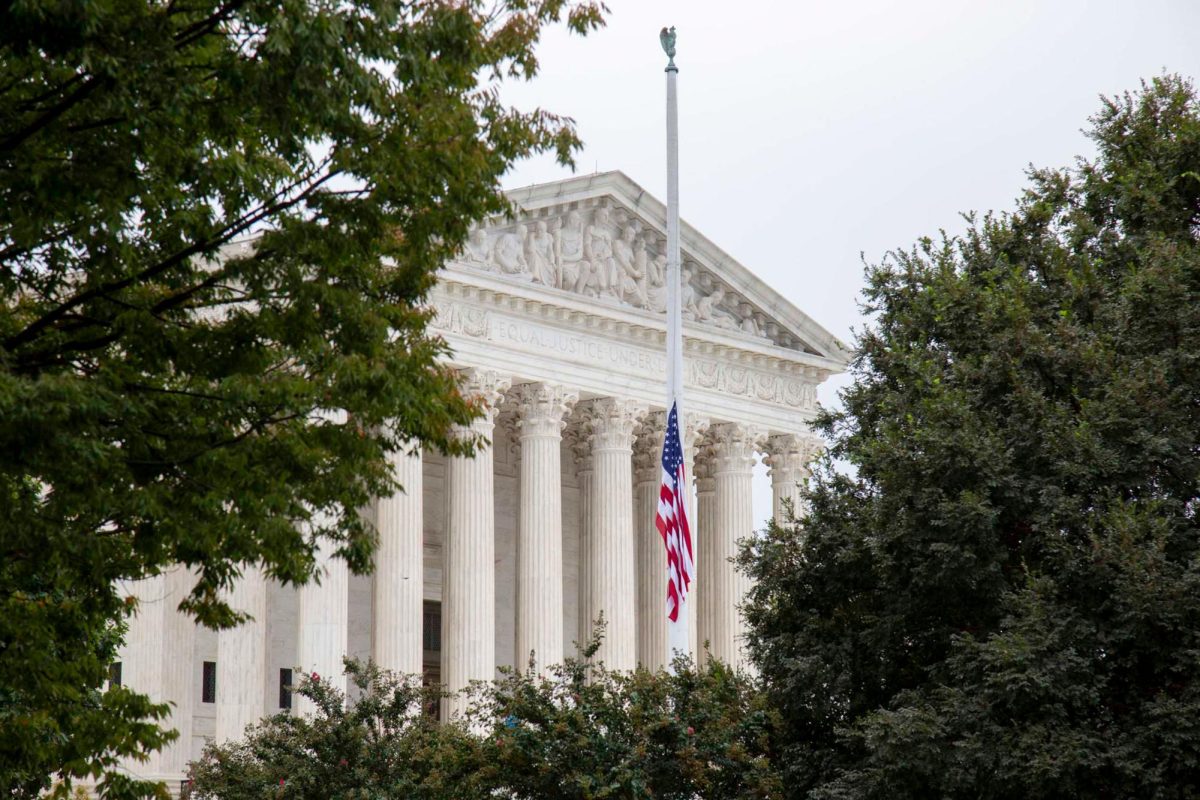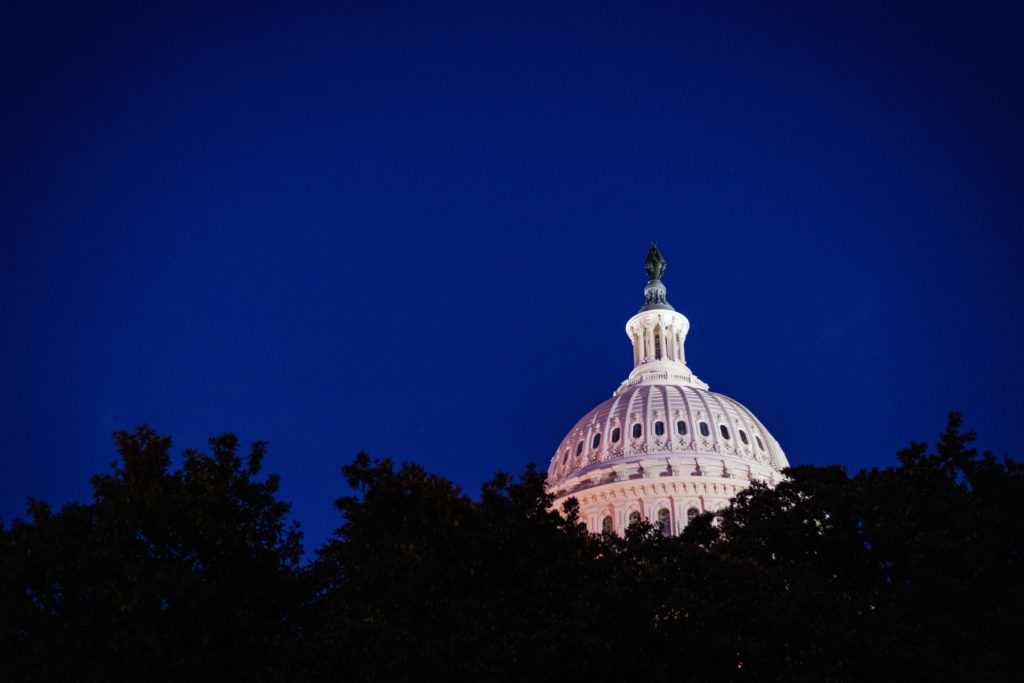Updated: Oct. 10, 2021 at 11:13 p.m.
Students said professors have kept six feet of distance when taking off their masks in class this fall as part of GW’s masking requirements set for faculty teaching in person.
Interim Provost Chris Bracey said at last month’s Faculty Senate meeting that students have reported “a few” complaints about faculty who break the University’s masking policy, which currently permits professors to lecture without a mask in a classroom if they are more than six feet away from students. More than 10 students said their professors have started taking off their masks during class to better project their voices and articulate their words but have stayed in compliance with the distance requirement.
“I encourage you all to remind your colleagues to abide by the mask mandate when in class because the students are paying attention,” Bracey said at the senate meeting.
Bracey said cases of mask non-compliance include not wearing masks properly over the nose and instructing without masks within six feet of students. He said officials have developed a “review, tracking and enforcement process” that monitors repeat offenders as a result of the complaints.
Chidera Ejeh, a sophomore studying public health, said her chemistry professor does not wear a mask while lecturing in a class of 50 students. She said she isn’t paranoid about getting infected because she is fully vaccinated and wears her own mask for protection.
“Because of all of the precautions that I have taken before, like taking my vitamins, getting vaccinated, wearing a good mask like a KN95 mask, I don’t think I am so scared about him not wearing a mask,” Ejeh said.
Freshman Jenna Stanco, whose major is undecided, said she feels “uncomfortable” that professors can take off their masks because the University’s indoor mask mandate requires students to keep masks on at all times and creates a double standard for professors.
“If we’re expected to continue setting the standard for safety, I think that everyone should be following that,” Stanco said.
Preston Schiller, a freshman majoring in international affairs, said if students are fully vaccinated, faculty shouldn’t need to wear masks in class. He said he would feel safe with professors teaching maskless because hospitalization rates are low for fully vaccinated individuals in D.C., with breakthrough cases making up just more than one percent of COVID-19 cases in the district.
Officials said 97 percent of students are fully vaccinated, two percent received medical and religious exemptions and one percent is not compliant with the vaccine requirement as of Sept. 15. Students who don’t comply with the vaccine requirement aren’t allowed to access GW buildings, and in “very limited and specific instances,” the University has withdrawn students for noncompliance, according to an email officials sent late last month.
Schiller said he struggles to understand his professors when their voices are muffled underneath the mask.
“I actually support having professors not wear masks because when someone is teaching, the mask kind of muffles what they’re saying and you can’t really read their lips,” Schiller said.
Christine Bistline-Bonilla, a professor of Spanish, said she wears her mask at all times, regardless of whether she’s six feet away from students, and comprehension issues usually arise because of difficulty of learning a second language, not the mask. She said she only took off her mask one day when she was more than six feet away to show her students how to recreate a sound in Spanish.
“Sometimes there are comprehension issues in a foreign language classroom,” Bistline-Bonilla said. “It is normal, it happens and when that happens I repeat myself.”
Bistline-Bonilla said she keeps her mask on to set an example for other students to wear their masks too. She said wearing her mask at all times is difficult because she typically likes to drink a lot of water while lecturing.
Kavita Daiya, a professor of English and the former director of the women’s, gender and sexuality studies program, said she wears her mask at all times while teaching. Daiya said wearing a mask does not inhibit her ability to teach in the classroom and none of her students have expressed concerns about difficulty comprehending in class.
“I think they actually appreciate my commitment to public health and to community health, and they appreciate that I keep my mask on the whole time,” Daiya said.
Experts in public health said social distancing is helpful in preventing the spread of the virus if professors are maskless.
Susan Hassig, an associate professor of epidemiology at Tulane University, said it’s a “good idea” for professors to wear their masks during lectures since they need to constantly project their voice and could possibly spread the virus while lecturing.
Hassig said professors should still wear a mask, even if they are six feet away from students. She said distance is “helpful,” but if the circulation of air in the classroom isn’t up to the required standards, aerosolized particles could still spread through the room.
“Faculty are the ones that are going to be speaking, that are going to be projecting from their respiratory tract, so they should be the people for whom it’s most important to wear a mask in the classroom,” Hassig said.
Hassig said professors can use microphones among several other solutions to help students who may otherwise struggle to comprehend faculty with masks. She said the blue surgical masks instead of cloth masks can allow professors to better project their sound from beneath the masks because the cloth tends to muffle the sound.
“I find that the surgical masks are what have been most comfortable for me to teach in, and as far as I can tell from student feedback, has provided the clearest experience for the students as well,” Hassig said.
Tomoko Udo, an associate professor of health policy, management and behavior at the State University of New York at Albany, said professors can safely take off their masks during class if a university has a vaccination coverage higher than 90 percent like GW. He said experts have not identified college classrooms as a “high risk situation” for coronavirus outbreaks.
“I think it is safe for them to take off the mask while teaching, especially when all students wear masks,” Udo said in an email.
This post was updated to correct the following:
The Hatchet incorrectly reported that Daiya is the director of the women’s, gender and sexuality studies program. She is the former director. We regret this error.








